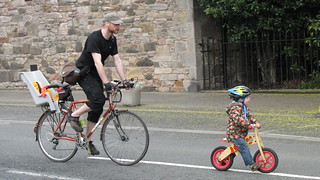I think about it like this... we're asking CEC to do something really really really difficult. The fact that there's plenty of public support for change doesn't make it an easy thing to do.
What this means is that what's needed is individual council staff and councillors who have the skill, inclination and nerve to carve themselves a political space in which they can really really stick their necks out... risking their careers and sanity in pursuit of something that may or may not come off.
As Janette Sadik-Khan puts it "The bike backlash of early 2011 were the toughest months I’ve ever endured professionally."
Don't anyone underestimate this. I've seen plenty of people in situations like this (outside transport) try for change and suffer real significant consequence for the attempt.
Don't read this to imply that I'm all on the side of the poor downtrodden council staff. I'm not. If you go into a job promising that you have the professional skills to design roads and city spaces properly then you have a duty to deliver on that. No question. And I'm not in the least sympathetic about any council's or individual's failure to really try... but I am sympathetic to the failure of individuals. In situations like this it takes real guts, courage, and a really deep level of political skill (small 'p') to do your job properly. People who have the guts and skills are pretty rare.
In the past I've worked with very large groups of people who wanted to do things differently from how the system around them worked... There were some who were brave enough - but failed on the politics (doing things differently alienates colleagues however 'right' you are). There were some who had the capability, but not the inclination (it's only a small proportion of people who have that character). The ones who were both brave enough and capable enough to navigating the politics of this were very very rare and worth their weight in gold.
Which I guess leads me to thinking who there is out there in CEC that we should - despite their failings - be offering support to? Is anyone really sticking their neck out? If so, Janette Sadik-Khan says that it's the public support for changes that really tipped the balance in the end.

 posts
posts
